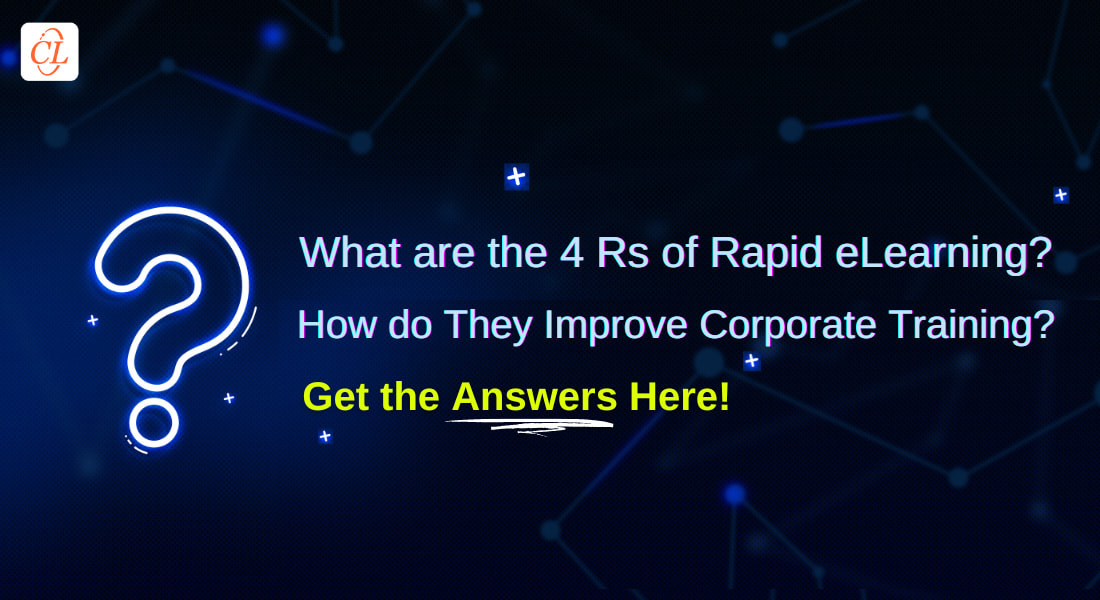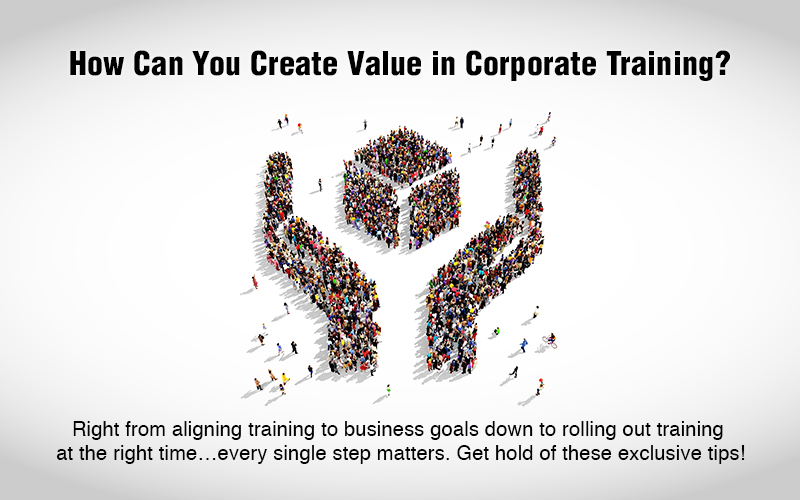The Changing Role of Corporate L&D: Creating Real Impact

Did you ever look at corporate Learning and Development in your organization and its evolution over the years and wonder, “Is that it? So, what happens next?”
Then 2020 happened. None of us were even remotely prepared for the unprecedented challenges it brought with it. Nonetheless, online training solutions came to our rescue and made sure that social distancing and working from home wouldn’t come in the way of workforce training. But more importantly, this challenging year showed that L&D professionals are up to any challenge, and not only where training is concerned – they can get involved in the larger business conversation and become leaders in times of crisis.
Need help in planning, design, and developing an effective and engaging online training strategy? Think about outsourcing!
Now that you have successfully resolved COVID-19 training disruptions, would you want to go back to where you were, trying to meet all the training demands of your stakeholders? Or do you want to become something more – a part of the larger business conversation? Show corporate L&D is not just about employee training but also about helping build the organization’s value, branding, and employability?
If you are for the second option, there’s the answer to your question, “So, what happens next?”. If you want to take corporate learning and development to a new and previously unimaginable heights, this blog is for you.
Last week, during our customer-exclusive event, Julie Veloz – Vice President, Global Diversity Intelligence, Strategy and Learning at IPG, gave an insightful presentation on the need for corporate learning and development to evolve from a culture of order-takers into impact-makers. It was both inspiring and relatable since for the last 20 years CommLab India has been on a mission to establish the importance of learning and development in the overall business of corporate organizations. So today, instead of the usual prattle on online training design, development, and technology, let’s talk about how we can actually revolutionize corporate L&D into becoming impact-makers.
How do we go about it?
Corporate Learning and Development: How to Make an Impact on Business Strategy
1. Understand the Changing Roles of Corporate L&D
Learning and Development has a long history – it existed before it was an organized industry or even had a name. But when we talk of corporate L&D, we are only talking about a few decades – and yet there have been tremendous changes in learning methods, strategies, as well as in technology. Also, there has been a lot of change in L&D itself and the role it plays in an organization. What started as a small part of Human Resources has now grown into a billion-dollar industry with the potential to grow even bigger.
It is important for you to understand that corporate L&D is no longer only about creating and delivering training solutions to the workplace. It now has a much bigger role to play in the organization.
We talk a lot about new-hire training or onboarding new hires. But did you know that one of the things that make an organization more appealing to the new-gen workforce is the training opportunities it offers? In fact, research shows that these new-gen workers are more likely to stick to a job if they find good learning opportunities and upward mobility within the organization. That makes corporate L&D not only responsible for employee onboarding, but also for employability and employee retention within the organization.
Corporate learning and development also helps create a value-based work culture and instill a sense of community. That is why we strongly advocate eLearning translation and localization for global organizations. Training that is consistent across locations and languages builds a sense of oneness and helps convey the brand value of your company even to your off-site and remote employees who have never set foot inside your main offices.
Motivating and encouraging employees is another way corporate L&D can help your organization achieve its business goals. Effective training motivates employees to take more training, thereby building proficiencies and enabling them to become more skilled and move up in their careers.
2. Shift from ‘Filling Learning Gaps’ to ‘Achieving Business Goals’
The mantra for a successful training solution is to align it to the organizational goals. That is why it is so important to frame learning objectives that are aligned to business goals. But more often than not, training is forced to focus on just filling one learning gap after another, and somewhere along the line, we stop seeing the forest for the trees and miss the big picture.
But if you really want L&D to play a larger role in the organization, you have to change your perspective from, ‘filling learning gaps on a project to project basis’ to ‘creating an overall strategy for learning and development in the organization’ – identify gaps, brainstorm over ideas, add new-age strategies and training approaches, and present a compelling business case for stakeholders. And the first step to achieving all this is to conduct a thorough Training Needs Analysis (TNA).
3. Tell a Data-driven Impactful Story to Gain Stakeholders’ Buy-in
Now we come to the crux of all problems that hinder L&D initiatives in your organization. You may already have a lot of ideas to improve the role of corporate L&D in your organization (even before reading this blog). But it usually happens that these plans come to nothing after one meeting or budget-related conversation with stakeholders. We all can relate to this. Most stakeholders have no inkling about how L&D works; they simply come to you with a problem and expect you to provide an instant training solution to that problem. And in the normal course of events, you do just that, and no more!
But there is a way you can make stakeholders listen when you talk. And that is to talk their language. Your stakeholders may not give you the time of day if you want to talk about the latest instructional strategy you want to adopt or a modern learning platform you want to install, but they will listen to you if you talk about data, Key Performance Indicators (KPIs), and ROI. So, give them the descriptive and predictive analysis of current training. Convince them on how Learning Analytics can prove the training ROI, show them evidence of how training can lead to improved productivity, decrease in errors, and change in employee behaviour.
And once you get your own seat at the table, you can start convincing them on how corporate L&D can truly contribute to the business beyond just devising training plans.
End Note
I hope that this blog has given you some food for thought. Once the table is set and you have your strategy in place, don’t hesitate to work towards your first move. And if you need any help along the way, you can refer to this eBook ‘Become an eLearning Champion’.
If you need help in making a business case for an effective online training strategy, download our free eBook.





